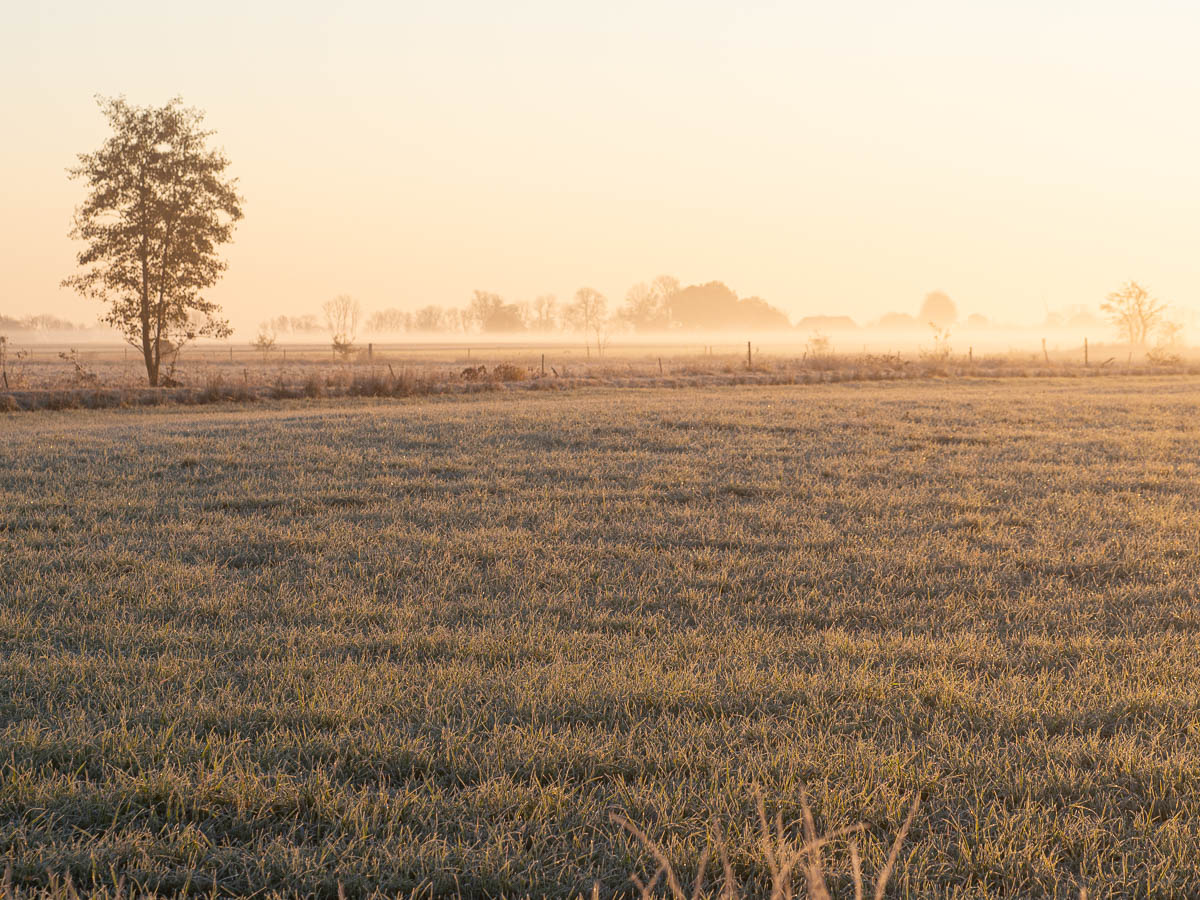
From the path near Sandtorp to Flyhov and back, 7 km. Then to Gössäter, 14 km.
Last night’s camping spot was very deliberately chosen to be as close as possible to the Bronze Age rock carvings at Flyhov. They are not on the Kinnekulle path but they are close enough that I decided to make a detour to go and see them. So I got up again with the sun this morning, packed my rucksack but left it in the tent, and went off the path, across fields and along lanes.
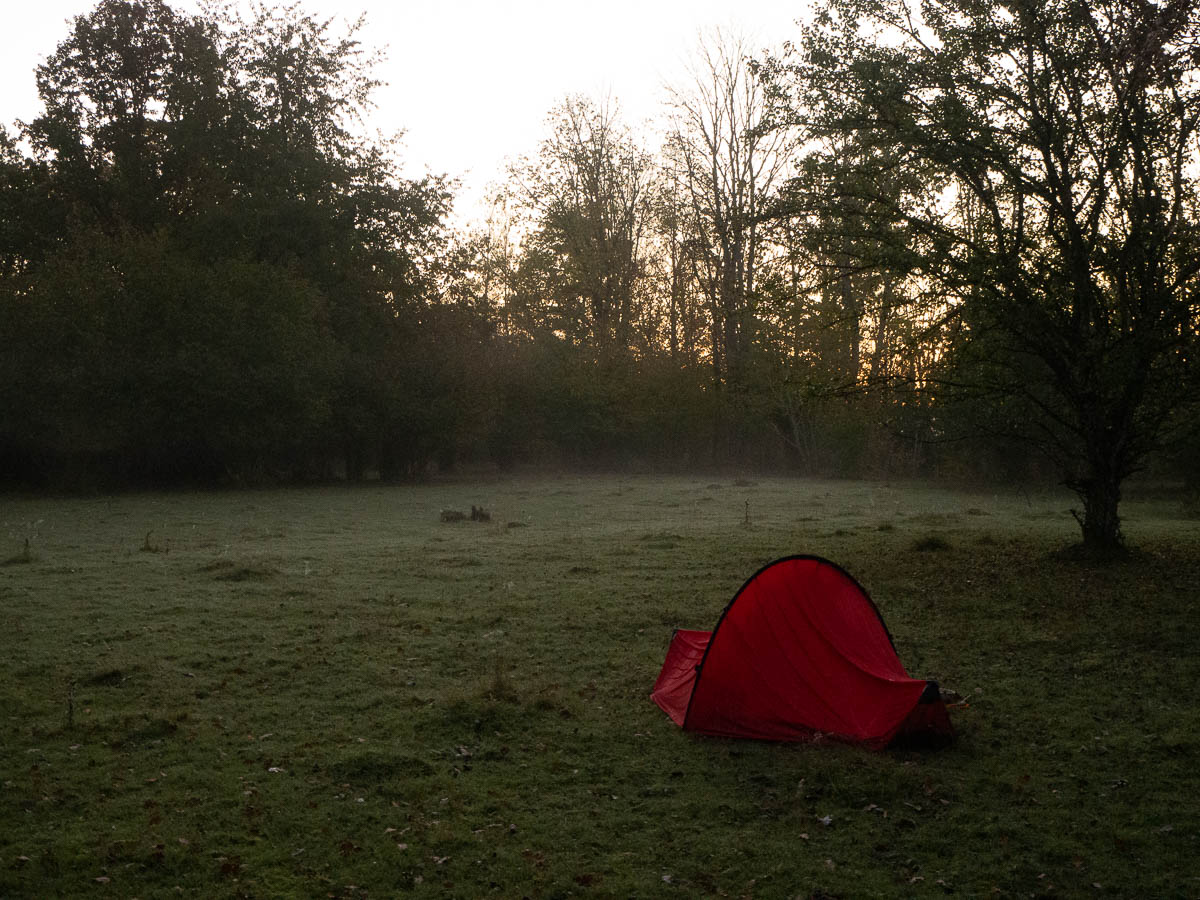
The first thing I noticed when I got out of the tent was the frost on the ground. I rather suspected it would be there, already before I’d seen it, given how cold the night was. I slept with my fleece jacket as an extra blanket on my upper body and I was still feeling cold much of the time.
But the payoff was incredible. The morning mist and the frost made the world so beautiful. The days have been sunny and warm so the field edges were still full of lush plant life, not just dry grass: daisies, thistles, nettles, dandelion seed heads. And all of it decked out in thick, sparkling crystals of ice.
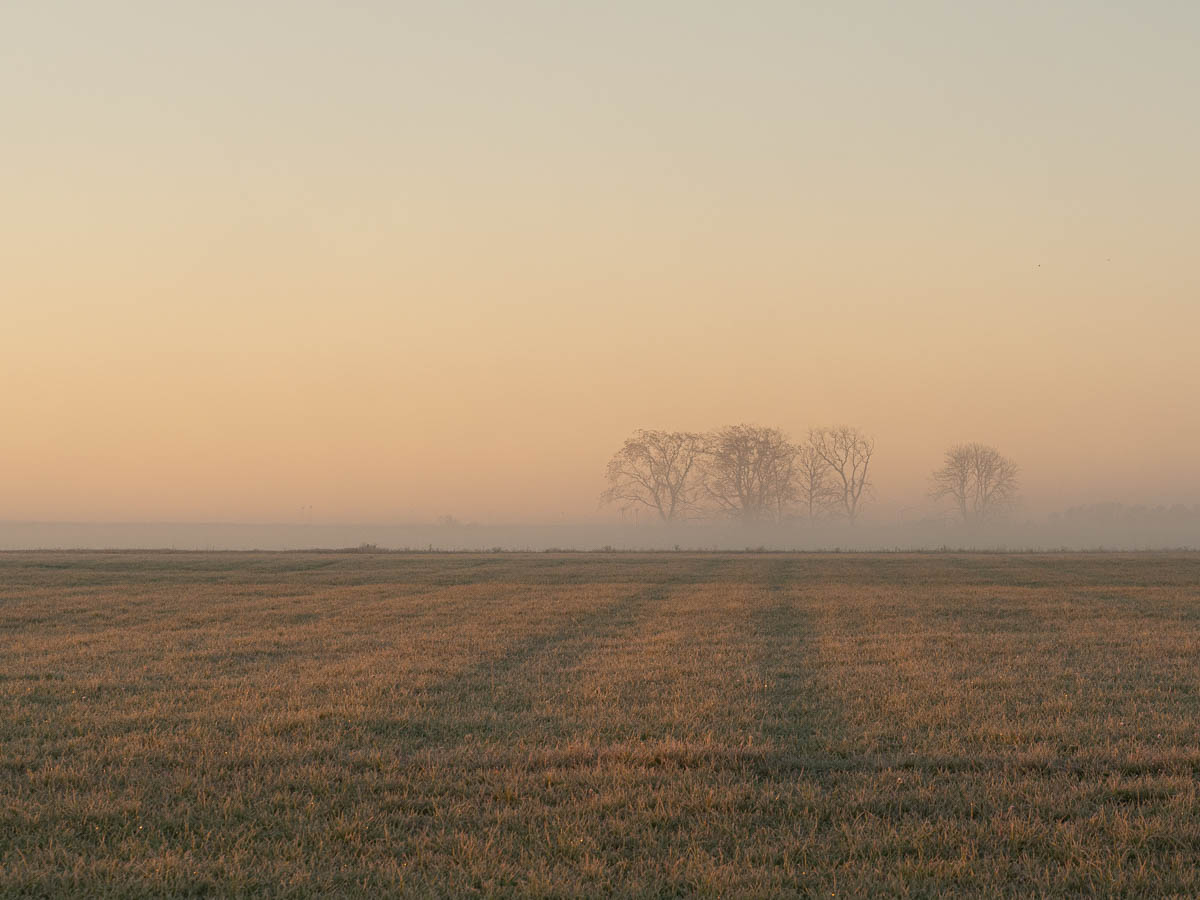
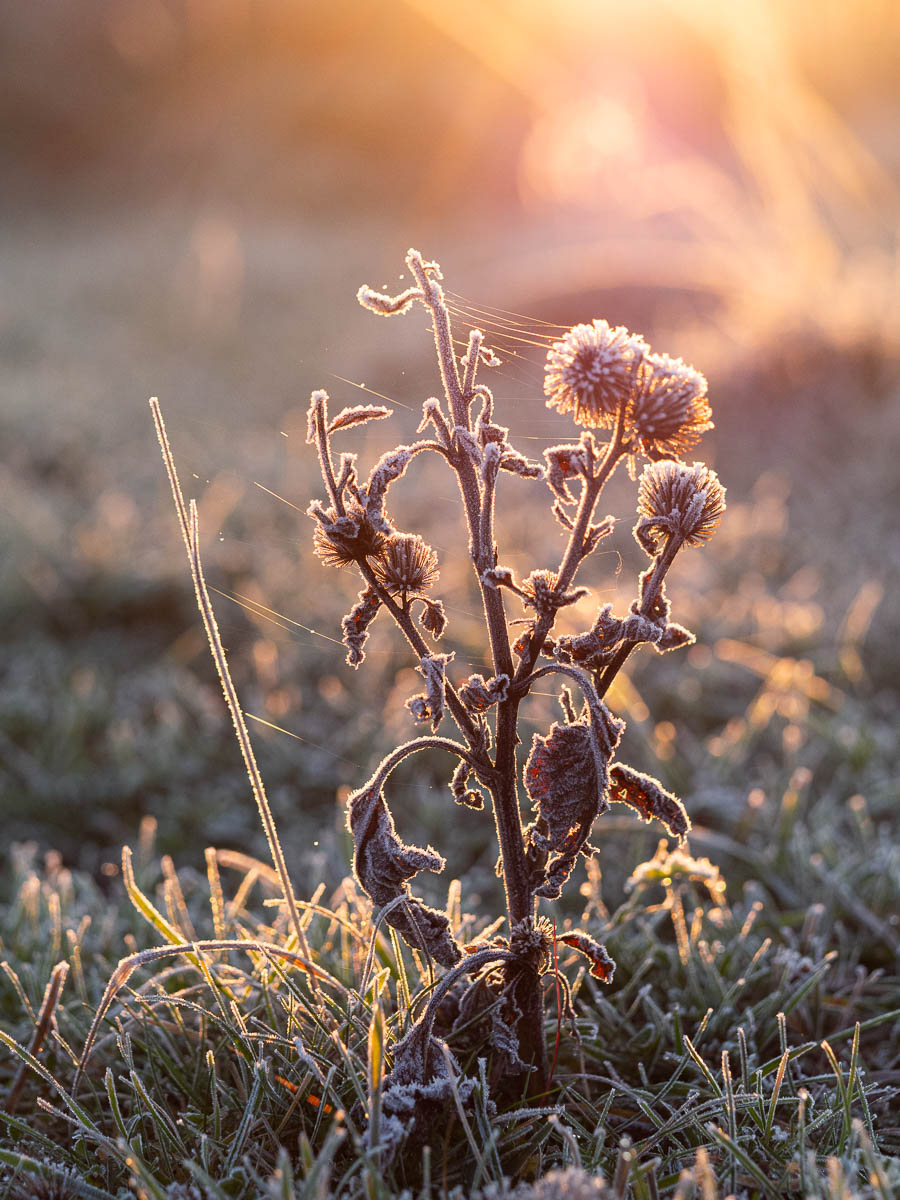
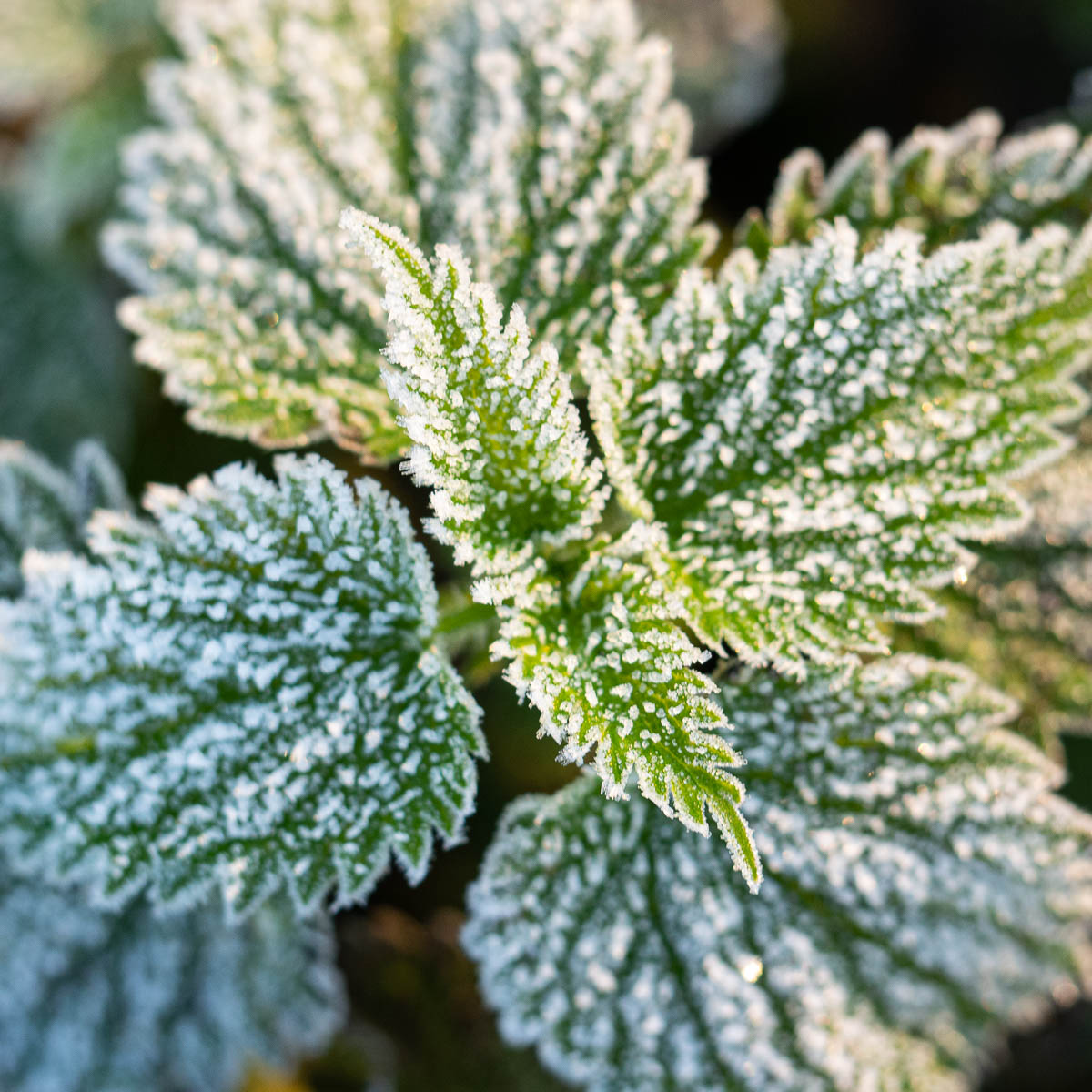
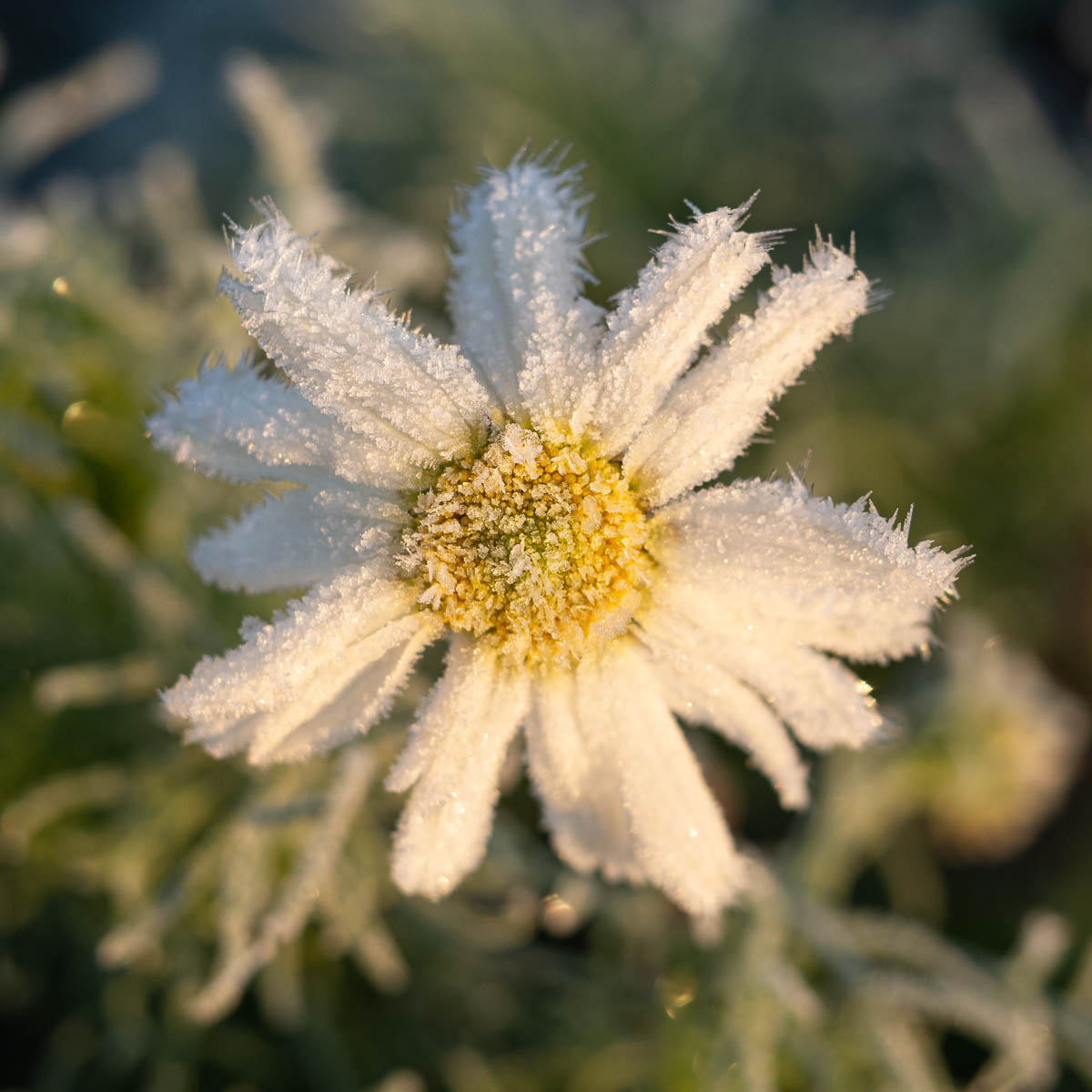
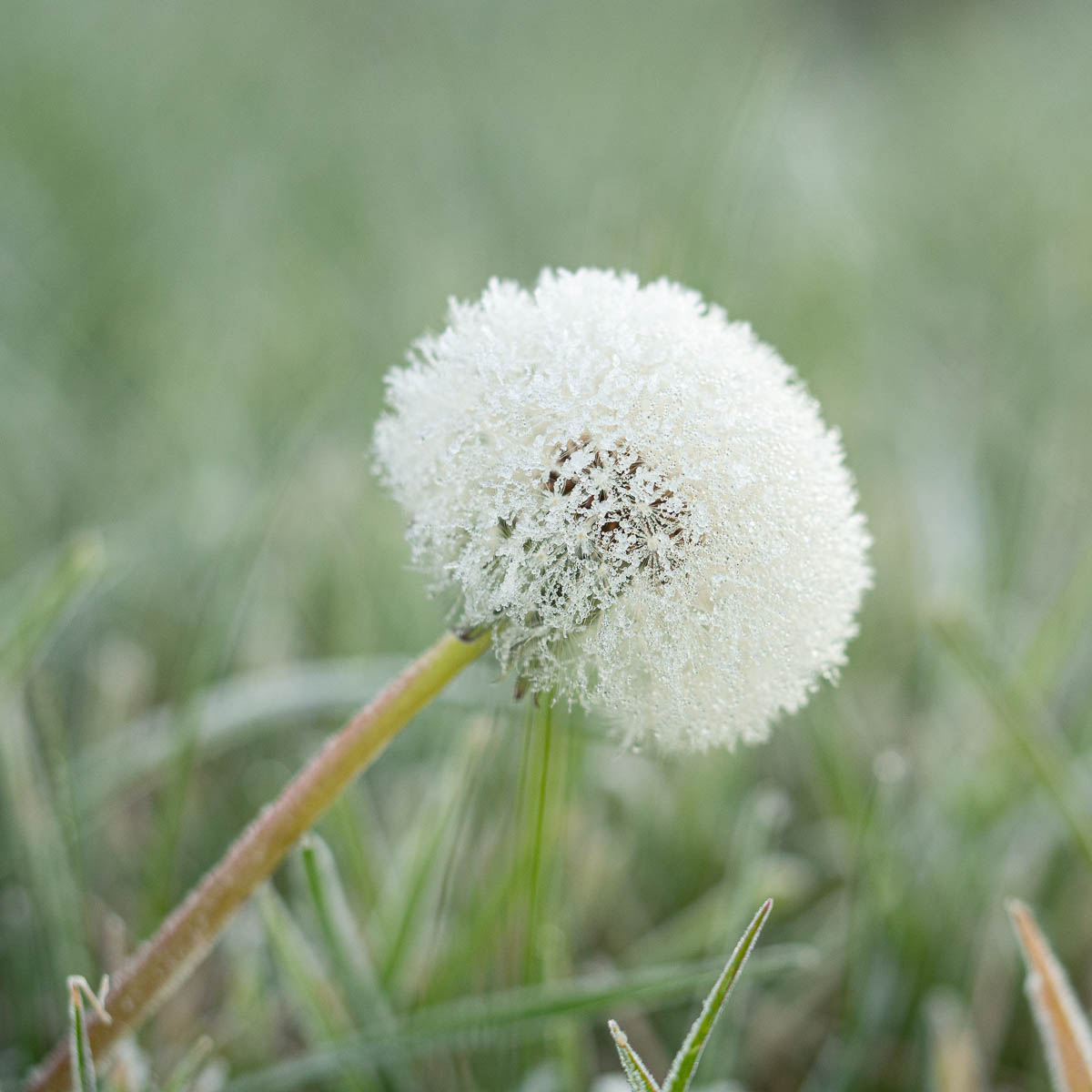
This early in the morning there were other creatures around than just humans. I scared a hare into flight and saw a fox at the edge of a field. On the way back I saw not just one but two herds of fallow deer. At home I’m used to seeing the occasional red deer or two, or maybe three, but the herds here were twenty or thirty strong at least.
The rock carvings were well worth a visit as well. They’re nicely presented, with a walkway that allows visitors to get quite close, and signs explaining what is what. Ships, wheels, men with swords and axes, mysterious networks of lines.
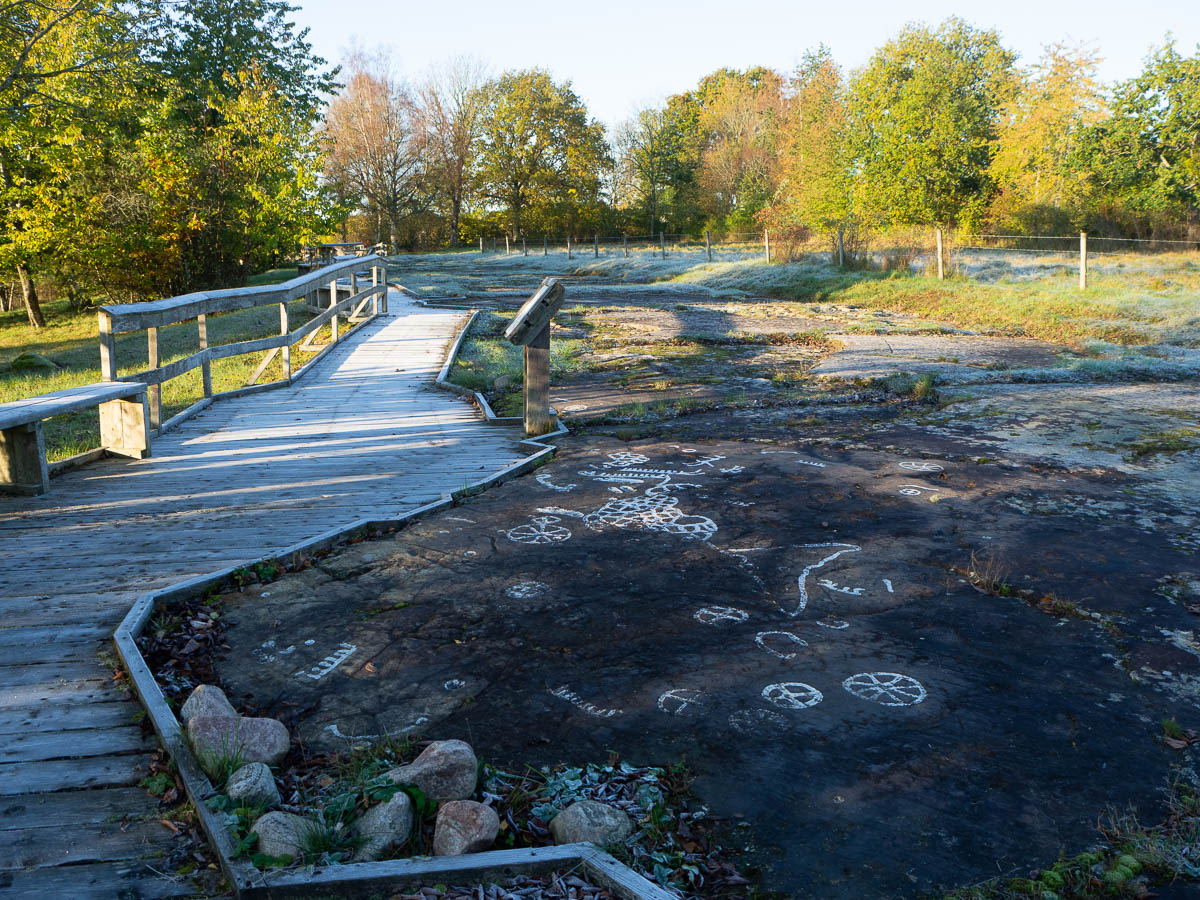
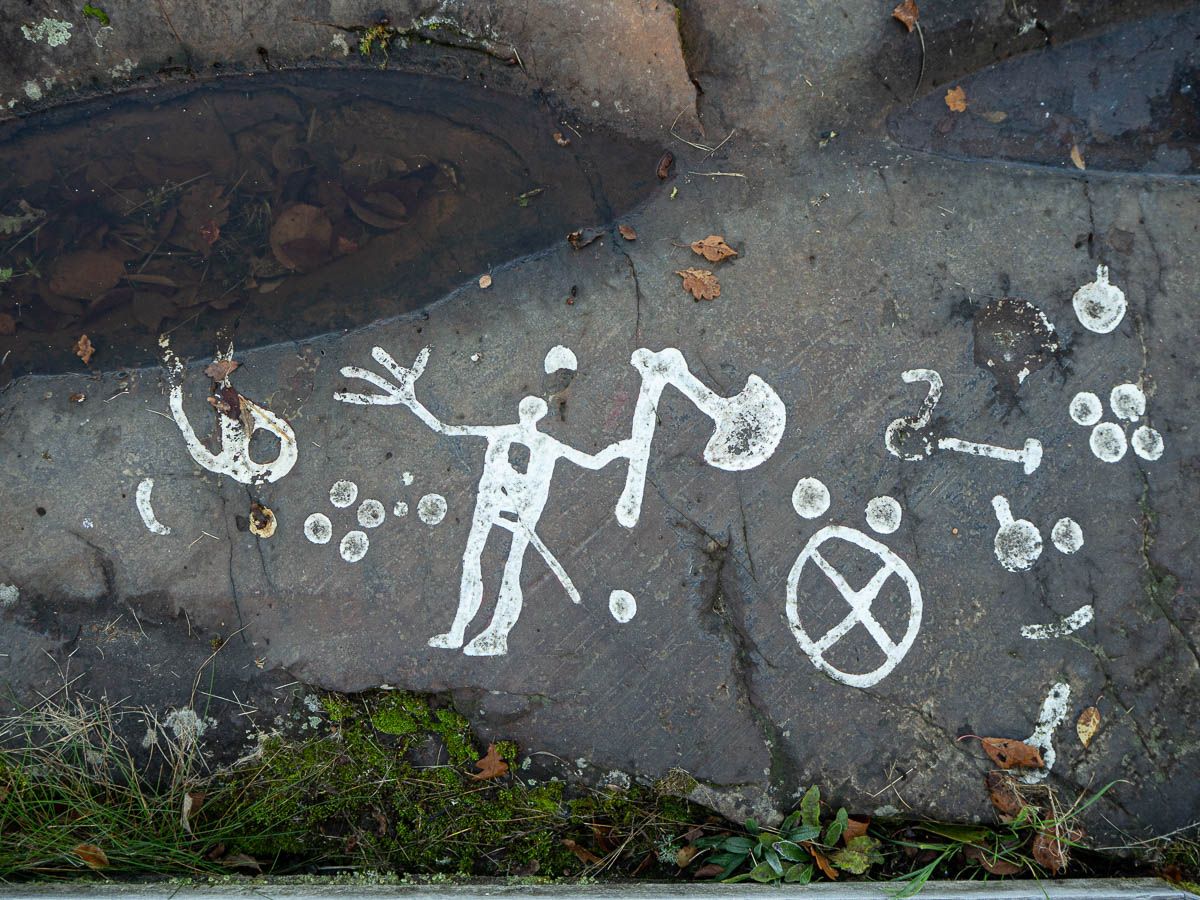
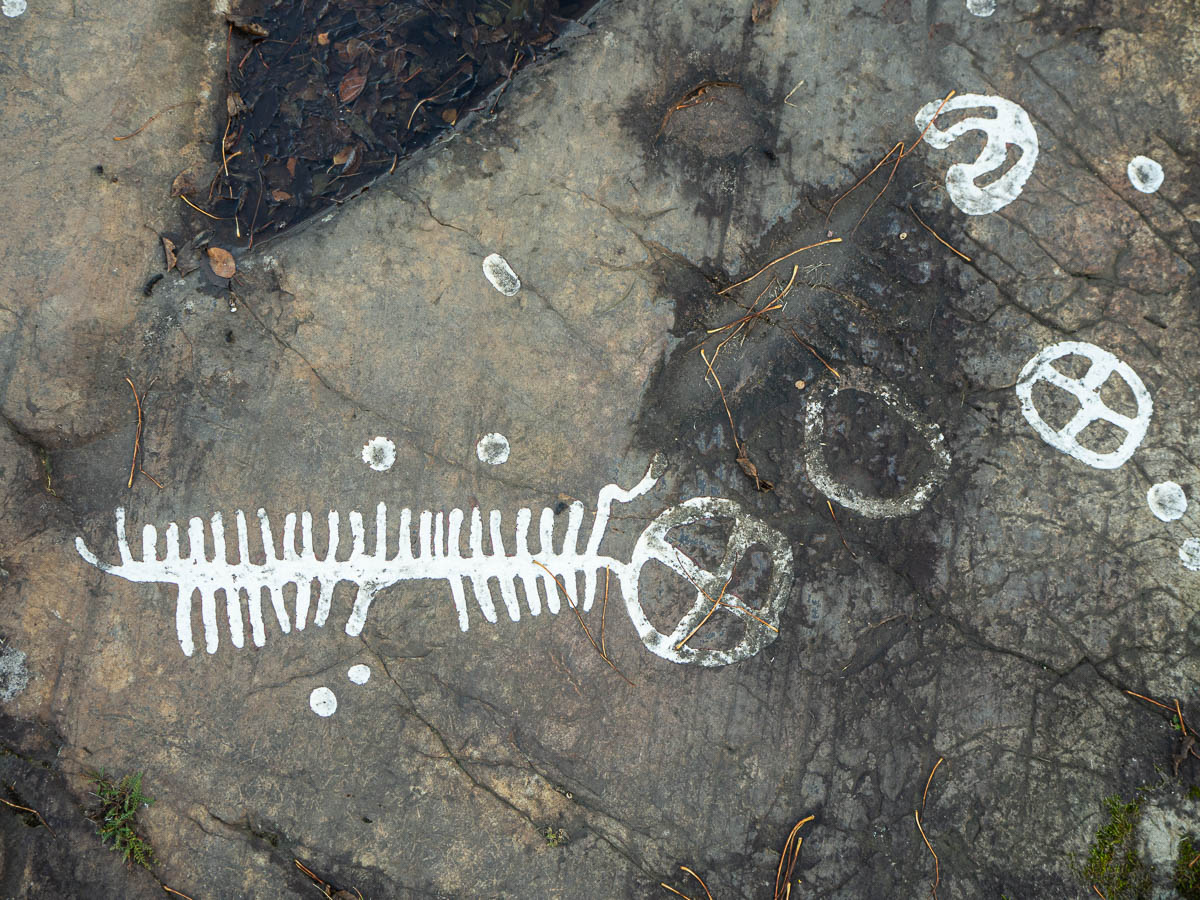
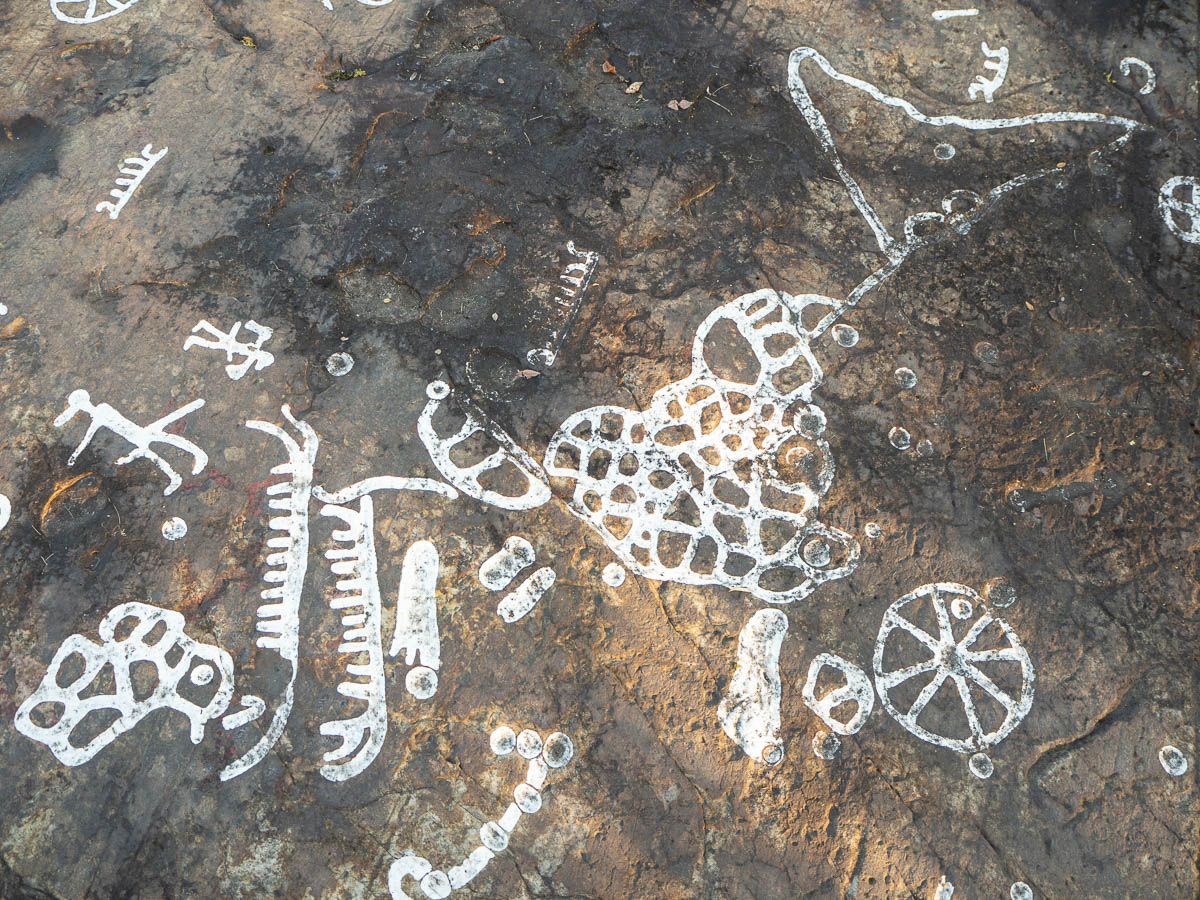
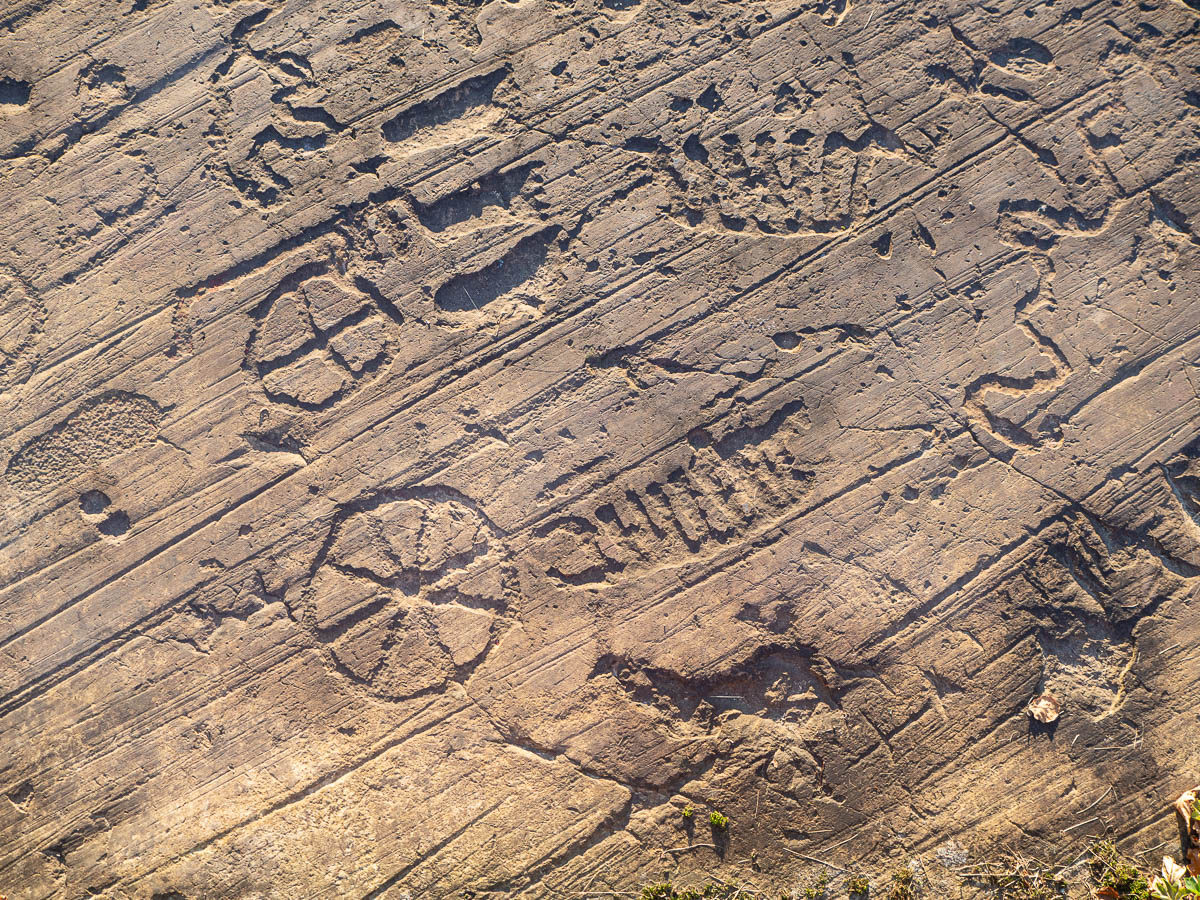
Most of the carvings are filled in with white paint to make them easier to see, but one section has been left unpainted so you can see what they originally looked like. And the carvings were all in surprisingly good state: I think some may have been uncovered only quite recently. At another site I read that some carvings get covered up for winter, to protect against the weather and especially ice I guess. Perhaps this is done here as well.
My quick packless 7 km walk, which could have taken an hour and a half, took nearly twice as long because I kept stopping for photos. By the time I was back the sun was well up and I was quite starving. I made my usual porridge breakfast and finally started walking on the Kinnekulle path at around 10.
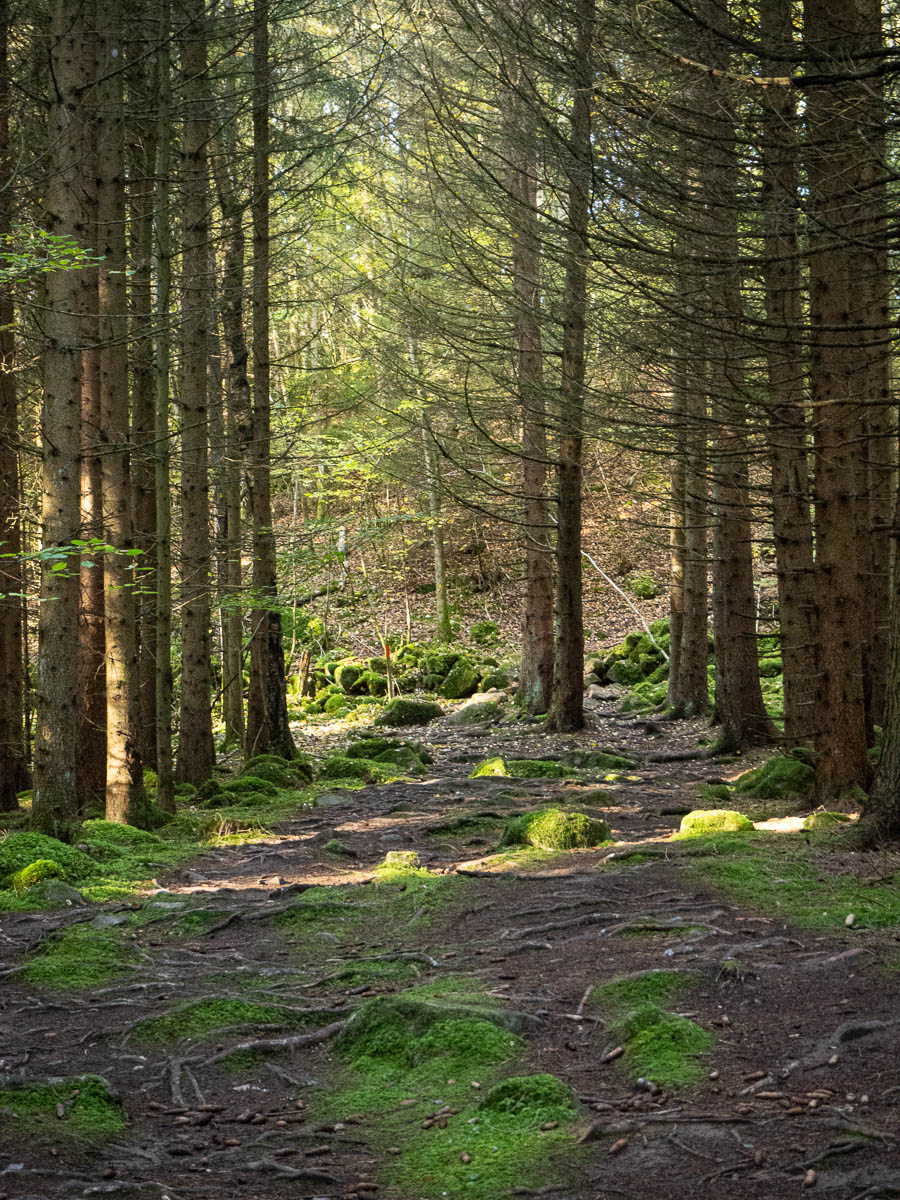
My tent was, of course, dripping again this morning. Condensation on the inside, melting frost on the outside. I’ve started unpacking it every time I make a slightly longer stop. I choose a flat, sunny, dry spot; spread out the tent in the sun and weigh it down with a couple of stones, and rearrange it occasionally to expose new parts to the sun and the wind. By the evening, after several such stops, the tent is more or less dry again, both inside and out.
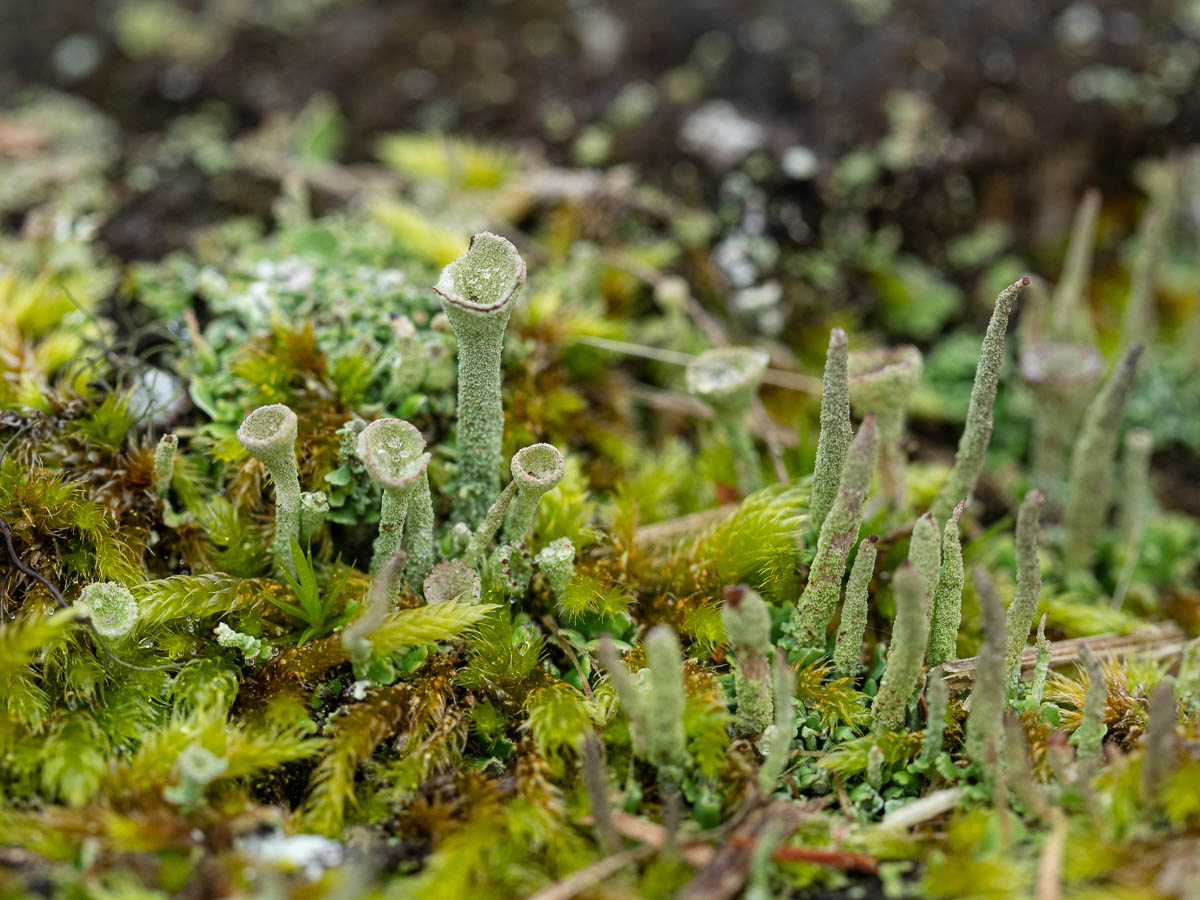
I take several long breaks every day. Like hobbits: elevenses, lunch, afternoon snack. For lunch I cook a hot meal; the others are cold snacks. I eat and I read, and perhaps make some photos. It’s very pleasant to sit out on a rock in a quiet sunny meadow and just read. I have no reason to hurry, because if I get “there” too early then all I get is a long evening of sitting and reading next my tent. Better to spread out that sitting and reading through the day.
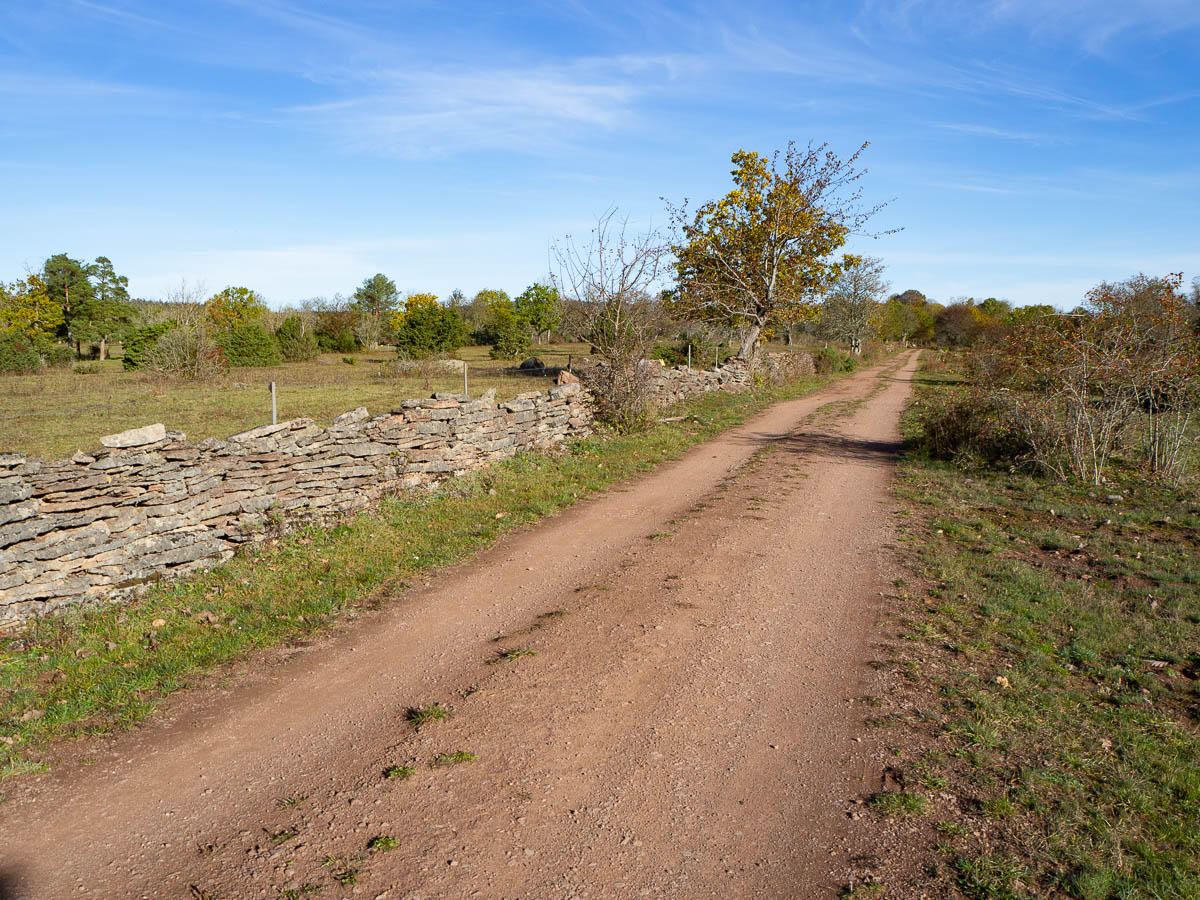
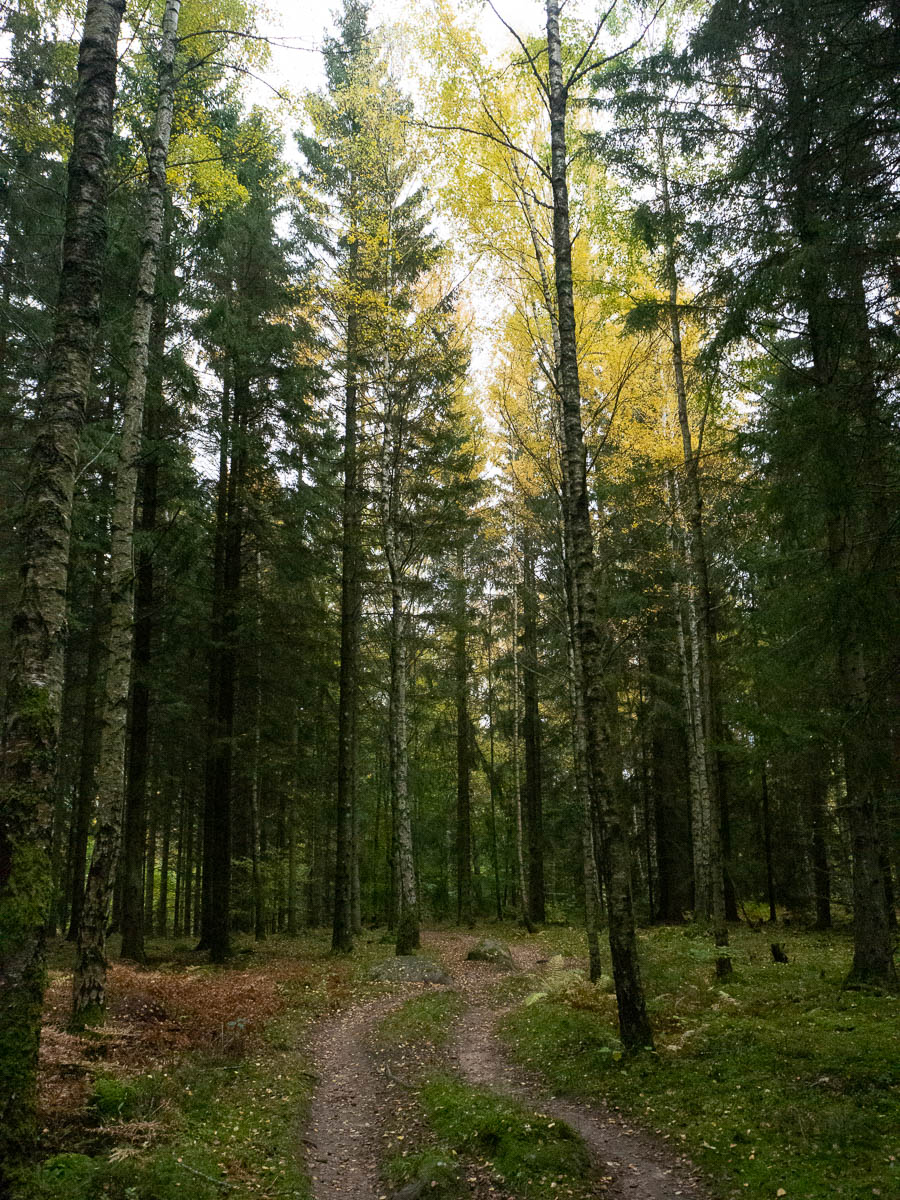
Today’s walking was much like the past two days: interesting and varied. Pastures and limestone meadows and forests of various kinds.
In the afternoon I reached the peak of Kinnekulle plateau mountain, which I’ve been circling since Thursday afternoon. There was a viewing tower, unfortunately closed this late in the season. But even without the tower, just looking out from on top of the hill, the views were wide.
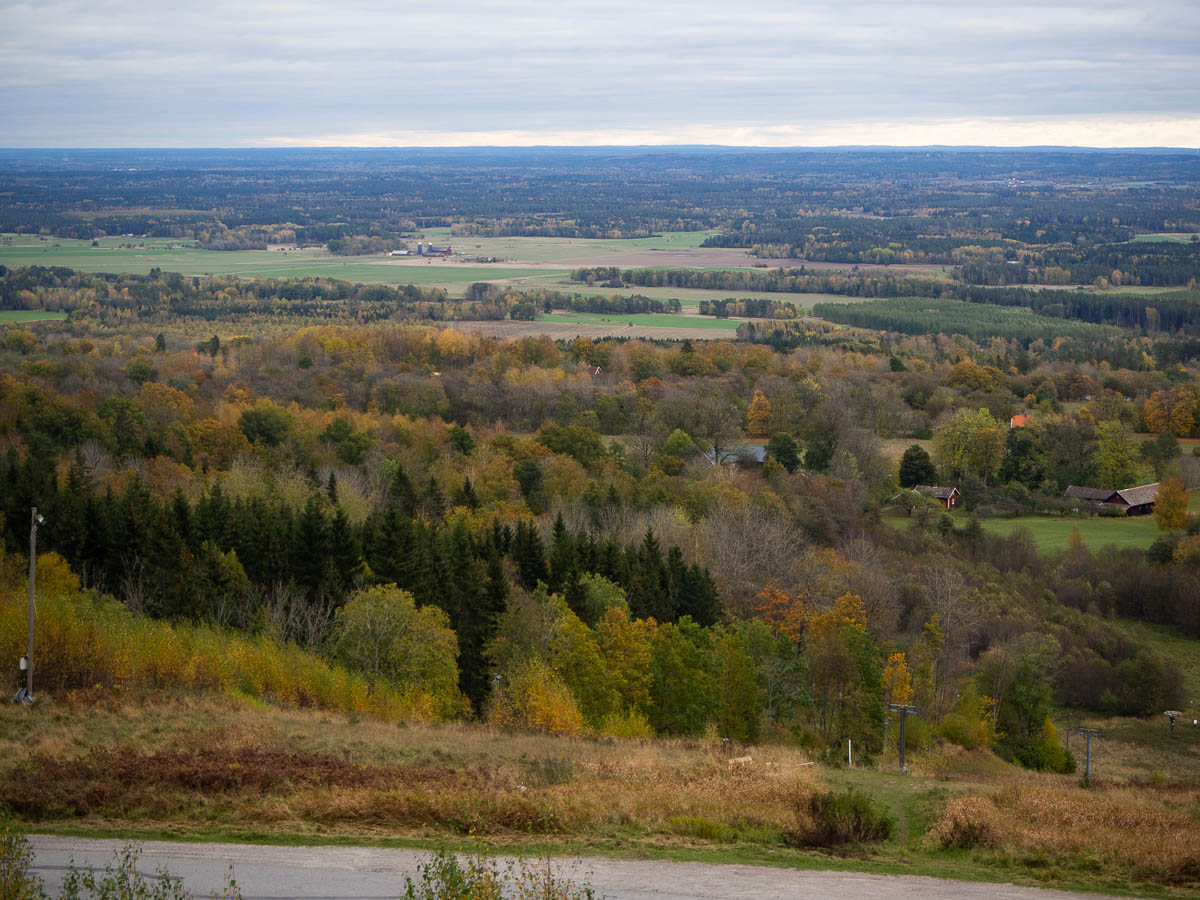
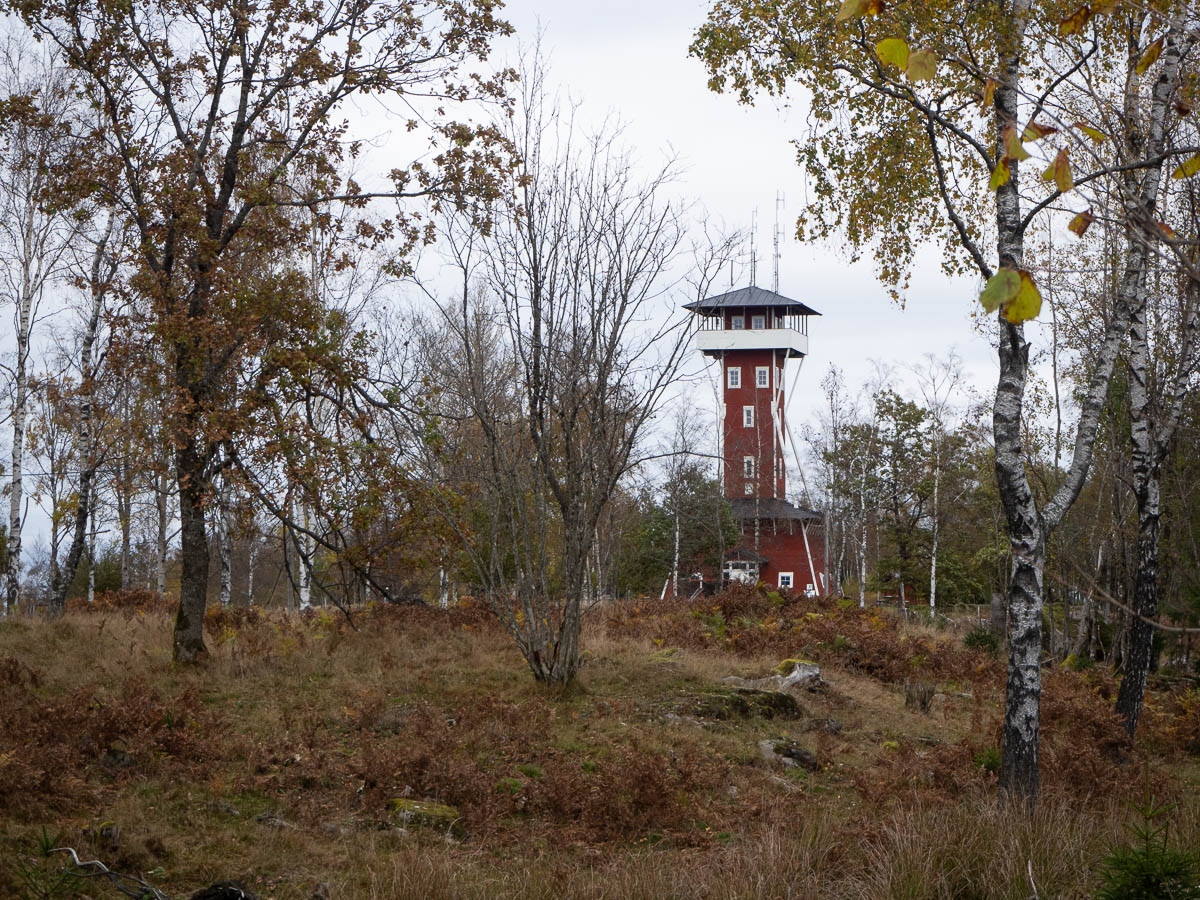
As evening approached, I realized I was running out of water again. So I kept walking for a bit longer than I had perhaps otherwise planned, all the way to the easternmost tip of the circular path, where it gets close to Gössäter. There I left my pack behind a pile of logs, left the path and aimed for civilization. Crossed the main road, knocked on the door of the first house I came to, and got my water bottles filled up again.
I pack as light as possible and my food is all dry and lightweight. I don’t want to undo all that scrimping by carrying too much water. But the drier the food, the more water I need for cooking, of course… On the whole, though, I’d rather carry fewer kilograms but walk more kilometres. This evening’s extra kilometre to get water, walked without any pack, was hardly noticeable – but an extra litre of water, carried all day, would not have been.
By now evening was approaching and it was really time to stop and set up camp. But I was in on a gravel road in a dense, scruffy spruce forest, full of tangled undergrowth, with no room anywhere to put up a tent. Finally I came to a rectangular, flat, cleared patch of ground next to a by-road – probably someone’s parking spot.
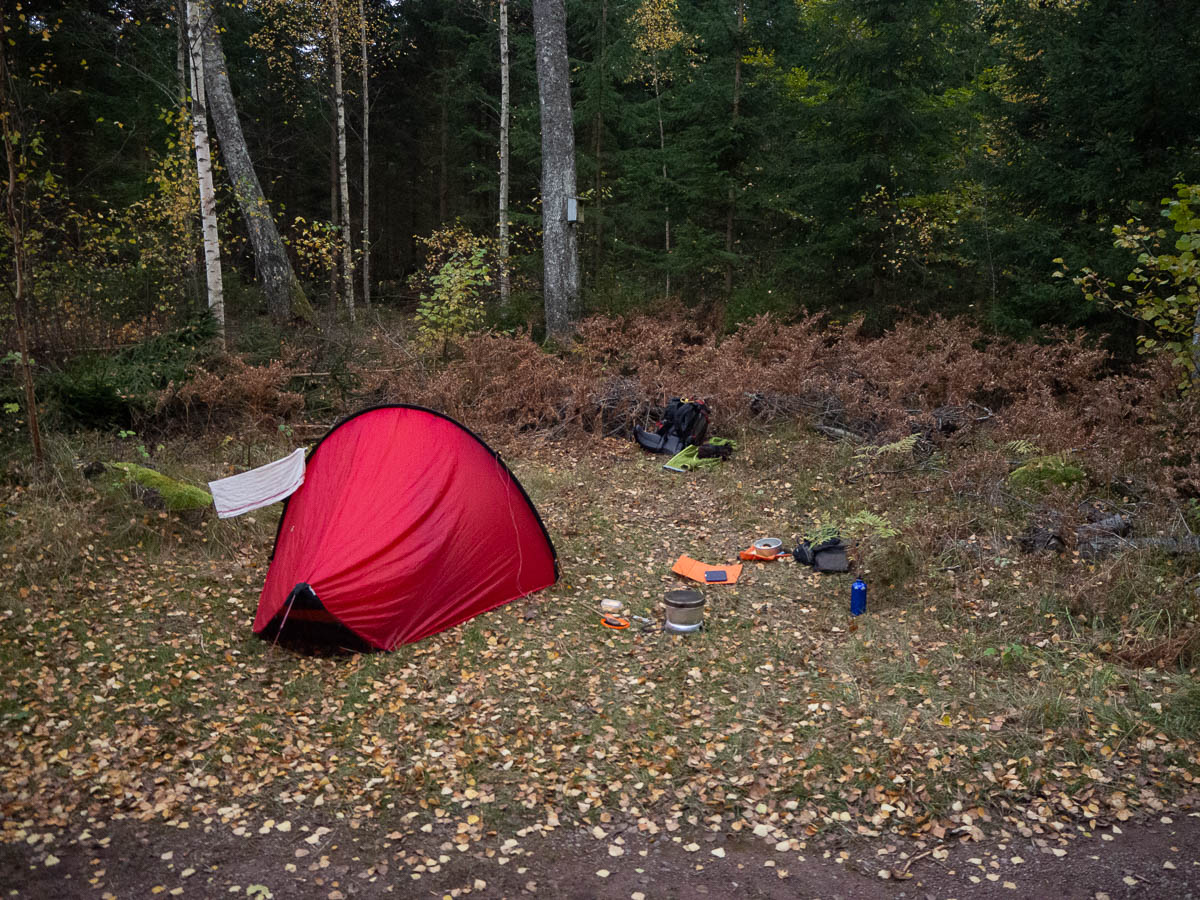
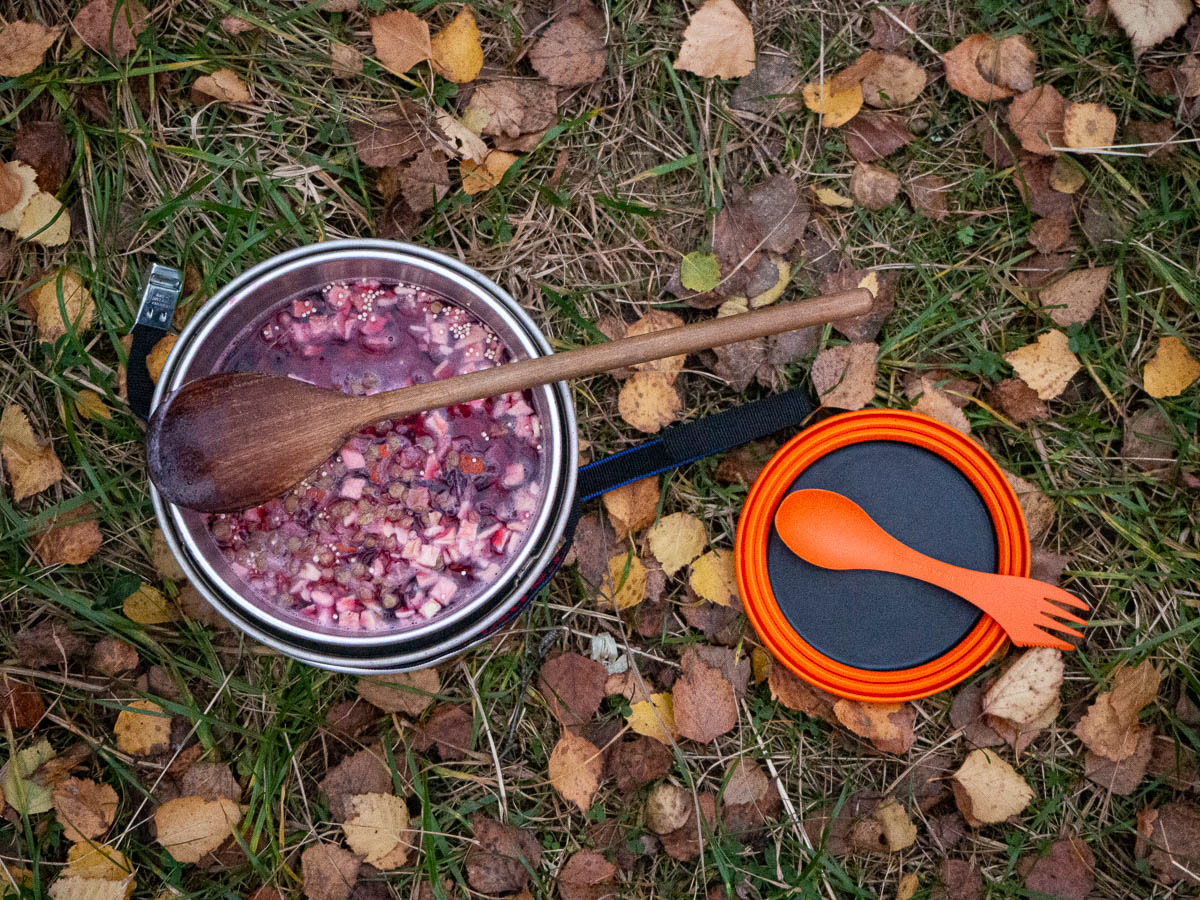
[…] my autumn hike in Jämtland, but replaced it with two lowland hikes (Kinnekulleleden day 1, day 2, day 3, day 4, and Sörmlandsleden day 1, day 2, day […]